For the Northern Hemisphere
February 18 - March 20, 2011
All times are local unless otherwise specified.
Night Sky Visitors ...
My 2011 sabbatical continues. In this abbreviated edition of the Pisces Night Sky, I offer the following to keep you looking up and tuned to the wonders above.
Clear skies,
Susan Sun
Look Up!![]()
Planetary Treats
Universe Today ... Search for any planet; learn the latest!
Star Gazer's Show Scripts highlight planets in the night sky.
Celestial Delights
Which Way Is the Sun Headed?
Plus ...
Sky Lights
Sky Calendars
Moon Dances 2/2-3/4
Moon Dances 3/4-4/3
Pisces Navigation Page
The Night Sky ~ Home Page
Planetary Treats
This Section Is "On Sabbatical"
The
Planets![]()
Is it
a planet? ... What planet? When you look up at the night sky, how do you
know you are looking at a planet? Learn
what a plutoid is. Click
here.
[ Return to Menu at top ]
Celestial
Delights![]()
The Spring or Vernal Equinox occurs
the exact moment in time when the Sun,
heading from the south to the north,
appears in the sky at the point where
the ecliptic crosses
the celestial
equator.

Image: HyperPhysics
The Spring Equinox in the northern hemisphere occurs Sunday, March 20, at 4:21pm PDT (23:21 UT). It refers to an instant in time at which the Earth is tilted neither toward nor away from the Sun.
The
Spring Equinox
Surprise your friends with equinox facts!
Participate in equinox global meditations.
Spring
Equinox
A new balance comes into play.
May
Your Springtime
Bring Emerging Opportunities
and Blessed Beginnings.
[ Return to Menu at top ]
Sky Lights ~ Pisces
February 18 - March 20, 2011
Jupiter and Mercury are our sunset planets. Look west at dusk. Jupiter is sinking toward the Sun; Mercury is rising above it. As the days unfold watch them move closer together and meet on Tuesday 3/15. 3/5-7 Dusk Map ~ 3/15 7:15pm Map ~ 3/16 Dusk Map Jupiter swiftly sinks out of sight the following week, while Mercury gives its best 2011 evening performance, reaching its greatest distance from the setting Sun 3/22.
Saturn rises in the east around 9:00pm in the beginning of Pisces and around 7:30 by its end. Its yellowish glow is eye-catching above (west of) bluish Spica. The planet at magnitude 0.4 shines a little brighter than this star. Use the Big Dipper to locate Saturn (see Arcturus below for details). The largest Full Moon of 2011 lies near Saturn 3/19. Full Moon Map/Text Saturn's rings are opening, revealing more and more of their northern face. The planet's ring tilt is 9º in March. Saturn brightens and grows bigger as it approaches Earth and its rings open to reflect more light. The planet reaches opposition and is at its best 4/3. Generate images of Saturn's ring tilt as seen from Earth with the Solar System Simulator.
Venus at magnitude -4.0 is breathtaking in the morning sky, however it is sinking toward the Sun and is seen only 2 hours before sunrise. 3/1 the Crescent Moon is elegant near Venus. 3/1 6:15am Map An encore performance occurs 4/1. Map/Text
Mars in exact conjunction with the Sun 2/4 is too close to our central luminary to be seen. Morning Mars won't be easily seen until mid-May, 30 minutes before sunrise.
The Pleiades star
cluster can be seen high in the west in the early evening. Look for
the bright red star, Aldebaran, the eye of Taurus
the Bull. Northwest of this star find the mini dipper-shaped sparkling
Pleiades, the Bull's shoulder. The brighter red Betelgeuse, Orion's
shoulder star, lies southeast of Aldebaran and the Pleiades. These
two red stars and the cluster line up diagonally. Winter
Stars The Pleiades set around 1:00am during Pisces.
Capella is the very bright star overhead and northeast of the Pleiades. It is the brightest star seen the most often. It lies in the constellation Auriga, our celestial Santa. Winter Stars
Orion The Hunter, the cosmic giant, lies directly overhead at 8:00pm. Navigating with Orion introduces you to the winter stars. Use his belt stars to locate Sirius and Aldebaran, Betelgeuse and Rigel. Notice the colors of these 4 stars. The three belt stars of Orion represent the Three Wise Men. Orion helps one find the Winter Triangle, the Great Winter Hexagon and the Valentine's Star! Orion fully sets by 2:15am during Pisces.
Sirius the brightest star in the heavens can be seen in the southeast at sunset. It travels across the southern sky and sets in the southwest about 1:30am during Pisces. Winter Stars
Arcturus, a bright golden star, rises around 9:00pm during Pisces. Use the handle of the Big Dipper to arc down to golden Arcturus, then spike down to blue-white Spica in the south! Helpful Image In 2011 yellowish Saturn, which is growing in size and brightness, lies above (west of) bluish Spica. A large triangle is formed by these 3 colorful celestial bodies. Binoculars make vivid their colors. Big Dipper Navigation
![]()
I'd like to know your thoughts about The Night Sky ...
send me an email.
May your Night Sky traveling always be filled
with Celestial Delights and Treats!
Susan Sun
Getting
Started in Astronomy
Includes a downloadable Moon map and bimonthly star charts.
At Skymaps.com download a current monthly guide, evening sky map & calendar.
Link to Sky and Telescope's This Week's Sky at a Glance.
Spaceweather.com keeps you looking up!
Online
Schools
A space and science study guide for kids
[Return to Menu at top]
|
Thank You for Your Heartfelt |
The Night Sky
The Planets
Night Sky Glossary
Pisces
Navigation Page
12 Zodiacal Deities
Choosing
a Telescope
Spring
Equinox
Cosmology
~ Highlights
Legendary Journeys of
Hercules
Earthly Delights
Cosmology
Linkups~SouledOut.org's
Recommended Links
Glossary of Esoteric Terms & Phrases
SouledOut.org Site Map
SouledOut.org Home

